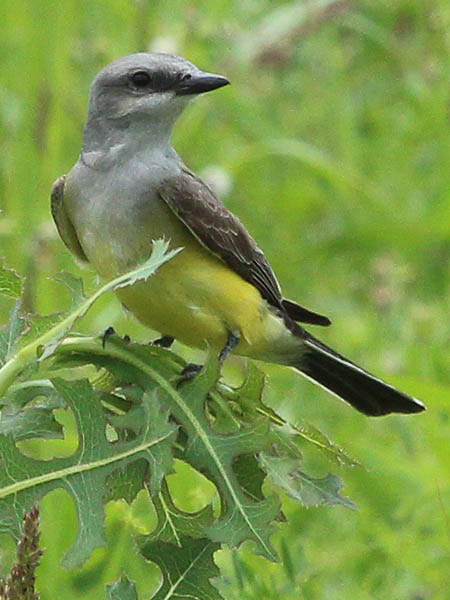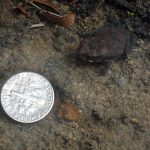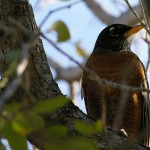A Western Kingbird photographed in a meadow near the Baylor Medical Center in Carrollton, Texas.





Observation Details
| County | – | Denton |
|
| City | – | Carrollton | |
| Date | – | May 19, 2013 | |
| Time of Day | – | Afternoon | |
| Temperature | – | Warm (70-89°F/21-32°C) | |
| Weather | – | Partly Cloudy | |
| Habitat | – | Agricultural-Farm | |
| Type of Behavior | – | Roaming | |
| Gender | – | Uncertain | |
| Maturity | – | Adult | |
| Observer | – | Chris Jackson |







I live in downtown Fort Worth. Recently I got in the habit of roaming around the city, when the summer sun doesn’t set till late. To make it more interesting, I started noticing the birds, bugs and other critters. It was was maybe in March that I noticed a yellow-breasted bird in a tree on the east side of the Tarrant County Courthouse. I made a mental note of it. A look through my Audubon made me think it might be a Western Kingbird.
The second time I saw one – I’m not sure how long after my first sighting – was at the same place. This time, it wasn’t in the tree. I had heard some squawking behind me, and turned to see the yellow-breasted bird on the winning end of an aerial dogfight with a big Great-tailed Grackle.
The next sighting was at Tindall Square, not very far from the Courthouse. I was sitting on a utility wire between two buildings. I had binoculars with me this time, and I got a good look at him (or her?) as the bird sat there looking both stern and placid. Definitely a Western Kingbird. While I watched, a group of Grackles flew up. Three of the perched on top of the utility pole a couple of yards away, while the fourth perched on the wire a few feet from the Kingbird. The three on the pole squawked as if egging on the one on the wire. He (the Grackle on the wire) would inch is way nearer to the Kingbird, apparently hoping to intimidate him. The Grackles seemed like streets thoughts thought were so used to getting away on attitude that they didn’t know what to do when their bluff was called. The Kingbird just say there, staring ahead; he planned to win the battle of nerves. During this, the Kingbird let out these quiet but regular “yawps”.
Finally, the gang of Grackles gave a short burst of frustrated screeches and squawks and flew off. If bird tails could go between their legs, that’s where they would have been.
I’ve seen this several times, in various forms. Western Kingbirds can’t stand Grackles. I admire them.
Grackles are shifty birds. Thanks for sharing your great observations!
Thanks for indulging me. I love this website, by the way. Very well done. It’s nice to know that the next time I see a new bird, bug, or beast, I can check here first. Will try to find your book.
Thanks for stopping by, Mike. I’m glad you found us!
A few years ago, in Garland, we had a beehive in an external wall. Usually the bees were not aggressive, but one day when I went up on the roof to trim tree branches away from the eaves, there were an Eastern kingbird (white breast) and a Western kingbird (yellow breast) both perched in a pine tree, both catching bees in midair. This greatly riled up the bees and they began stinging me. I swatted and stunned several with the saw and then pulverized them on the shingles with my shoes. There were 3 people in the house and nobody came to my rescue, despite all the running and stomping I was doing up there. Anyway, I lived to tell the tale, and afterwards I went out and watched the kingbirds eat bees from a safe distance, on the ground.
By the way, back in the ‘90’s we had some yellow-breasted birds that used to build several (maybe a dozen or more) decoy nests in the same tree with the real nest, I presume to fool predators and cowbirds. The decoy nests were basically just loose assemblies of twigs, and they would fall apart in wind and rain. Anybody have an idea as to what these were? They weren’t house wrens—they were too big and they had yellow breasts. They returned to the same tree for 3 years in a row.